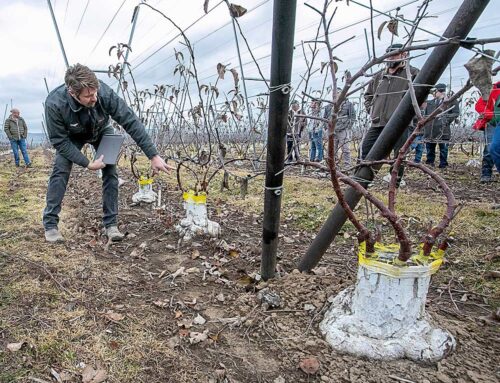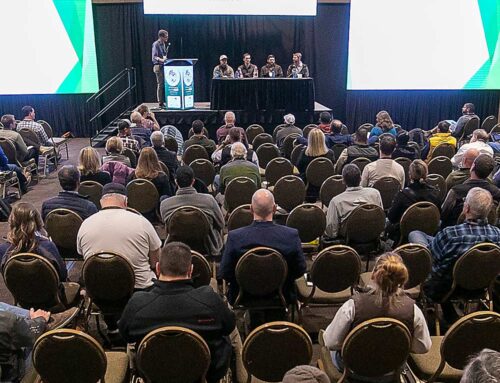Trellises, growth regulators and Malling 26 rootstocks are crucial components for Libby and Son U-Picks in Limerick, Maine — just as much as live music, smoothies and restrooms with running water.

Aaron Libby
That’s why Aaron Libby, 32, attended the February International Fruit Tree Association conference in Grand Rapids, Michigan. Small growers need to learn the latest science, too, he said.
“Our production of the trees doesn’t vary much from the large grower of Michigan or Washington or New York,” he said.
Libby is a politically savvy grower who serves on the executive committee of the Maine Pomological Society and served in the Maine House of Representatives from 2010-2014 as a Republican. He did not seek re-election.
Libby, a third-generation fruit grower, is also the son in Libby and Son U-Picks, a business that has shifted from strictly wholesale and traditional varieties to agritainment. U-pick makes up about 90 percent of the income for the farm, nestled in the rolling hills about an hour west of Portland, Maine.
Libby has musicians playing most of the open hours and boasts of his fully plumbed restrooms. His family serves homemade doughnuts and just bought a new smoothie machine. Customers come to his family’s farm for fun, not groceries.
 Still, they like the high-density systems where apples are easier to reach, Libby said. “The customer, when they come, they’re there to have that experience, but they also want to be able to find the fruit easier.”
Still, they like the high-density systems where apples are easier to reach, Libby said. “The customer, when they come, they’re there to have that experience, but they also want to be able to find the fruit easier.”
Thus, Libby has to keep up with the new techniques of precision orchards just as much as vast commercial growers. They also do some small-scale wholesaling.
Libby and his parents, Michael and Mary Libby, bought a portion of Three Hills Apple Orchard in 1999 after the farm went under due to low prices and three straight years of hail damage.
The farm had mostly Cortland and McIntosh apples planted on M.7 rootstocks in the 1980s with 16-foot spacing.
Aaron was in high school at the time.
They took the youngest of the apple blocks and started U-pick right away. They cut many of the McIntosh trees and planted 18 acres of highbush blueberries, adding new apples over the years. Today, they have 20 varieties, with the crowd-pleasing favorite Honeycrisp among them.
“We very much changed the outlook of what the trees look like,” he said.
Though his family still has demand for Cortland and McIntosh apples, most of their trees are new now. They replanted the trees to 6-foot spacing or less with M.26 rootstocks. Their newest block is 3 1/2 acres of high-density, trellised tall spindle trees with 11-by-3-foot spacing.
Libby attended the IFTA conference eager to learn about multiple-leader fruiting walls, growth regulators and fire blight risks of dwarfing rootstocks to find the next technique to make the Maine orchard more attractive and efficient.
“The game is always changing, so you have to change with it,” he said. •
– by Ross Courtney






Leave A Comment